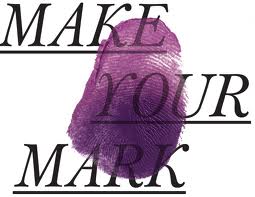Good morning, DonorDreams blog subscribers. I thought I’d give you another day off from my random non-profit and fundraising thoughts by offering you an awesome article about DONOR COMMUNICATION, STEWARDSHIP AND RETENTION from a guest blogger. This guest post is from Nathan Hand, who is a fundraising professional in Central Indiana. Check out his blog posts at NonprofitNate.com. Enjoy!
 It happened again. And I’ve had it up to here (*as he raises his hand 2 inches above his head*).
It happened again. And I’ve had it up to here (*as he raises his hand 2 inches above his head*).
This post may get me in trouble but this is important.
I was visiting with a community business leader yesterday. He told me that he and his wife had supported an organization several times over the years,but he hadn’t heard from them in 14 months. The communication he received yesterday was a solicitation for a significant gift. Done via email. Out of the blue.
If that doesn’t surprise and horify you, it should, but surely this will. He politely declined. In his words, he and his wife had understandably ‘moved on’. In return, he immediately received a ranting email from the fundraiser calling him out for his lack of support.
Ho.Lee.Cow. Stop it already!
What happened? Where did this go wrong? It’s an epidemic racing across the country and affecting every cause. It’s destroying the field of fundraising and the nonprofit sector. And I don’t blame the fundraiser (entirely). For those unaware, data released recently from Compasspoint should have fundraisers and nonprofit CEOs more-than concerned. (Download and read the full report)
Simone Joyeaux summarized politely:
“In summary, here’s the scoop: Development officers quit. Bosses fire development officers. Boards don’t play. Organizations don’t get it. This vicious cycle threatens financing of the sector. And, this has been going on for years and we aren’t really fixing it.”
Why?
I think it’s a lack of patience and focusing on true philanthropy. Organizations are spread too thin (few staff, barely funded), causing the organization to put undue pressure on their fundraisers who then pressure donors and send clear signals of desperation (cue the story above) and have completely unrealistic expectations on top of it. It destroys any hope of a positive relationship and future with those donors. No wonder half of all donors don’t renew!?! We’re waisting an incredible amount of time and money recruiting/aquiring folks only to treat them horribly and then we have the nerve to wonder why they don’t stick around!?!?
Phew. Enough ranting. What’s the solution?
CEOs – Realize that donors want and expect to hear from you. Fundraising should be YOUR priority, not something you hire someone to take care of. Be intimately involved in the process, in the hiring and for goodness sake, pay a competitive salary to attract and retain talent in a relationship-based position. Understand that the development director’s job is to pull levers and orchestrate you, the board and other major advocates in engaging your network to build support for the organization. Until they’ve been a part of the team for several years, they won’t have the relational credibility to be successful. Like sales, financial advisors and other relationship-based business, the first few years are establishing repor and won’t bear fruit for some time.
Development pros – You’re more to blame than CEOs. Yes, I said it. This is YOUR profession. It doesn’t mean you should do it alone but OWN this issue. Fix it for yourself, then your organization, then help others do the same. Do your homework before taking a position. Then do it again. A strong relationship is imperative with the CEO. Spend some time with them. If you don’t get more than an hour or two – that should be a clear sign that they don’t understand the magnitude of hiring a development pro. Meet with the Board Chair. Talk about these issues. Push them on their fundraising philosophy and how they and the board have been involved thus far and how willing they’ll be in the future. Make sure they understand there’s no money-printing press in the back. And look in the mirror! It’s easy to point fingers but make sure you have the patience to do this work, understand how to navigate the involvement of others and balance the slow, relationship-based part with being strategically assertive and making asks when appropriate.
It’s not a big deal. It’s just the future of the entire sector we’re talking about…
What do you think? Do you struggle with this? Is there a different problem we should be zooming in on?







 Welcome to O.D. Fridays at DonorDreams blog. Every Friday for the foreseeable future we will be looking more closely at a recent post from John Greco’s blog called “
Welcome to O.D. Fridays at DonorDreams blog. Every Friday for the foreseeable future we will be looking more closely at a recent post from John Greco’s blog called “ It is that time of the year when retailers are pulling out every stop in their little bag of tricks to get your attention and hopefully your holiday dollars. One of those shiny objects that some retailers use is called cause related marketing (CRM). Wikipedia does a nice job of
It is that time of the year when retailers are pulling out every stop in their little bag of tricks to get your attention and hopefully your holiday dollars. One of those shiny objects that some retailers use is called cause related marketing (CRM). Wikipedia does a nice job of  Welcome to O.D. Fridays at DonorDreams blog. Every Friday for the foreseeable future we will be looking more closely at a recent post from John Greco’s blog called “
Welcome to O.D. Fridays at DonorDreams blog. Every Friday for the foreseeable future we will be looking more closely at a recent post from John Greco’s blog called “ In that five-minute period of time as I paced the back of the banquet hall, there was a moment where I stopped listening and worrying about LaShaunda and I focused on what was happening in the room:
In that five-minute period of time as I paced the back of the banquet hall, there was a moment where I stopped listening and worrying about LaShaunda and I focused on what was happening in the room:

